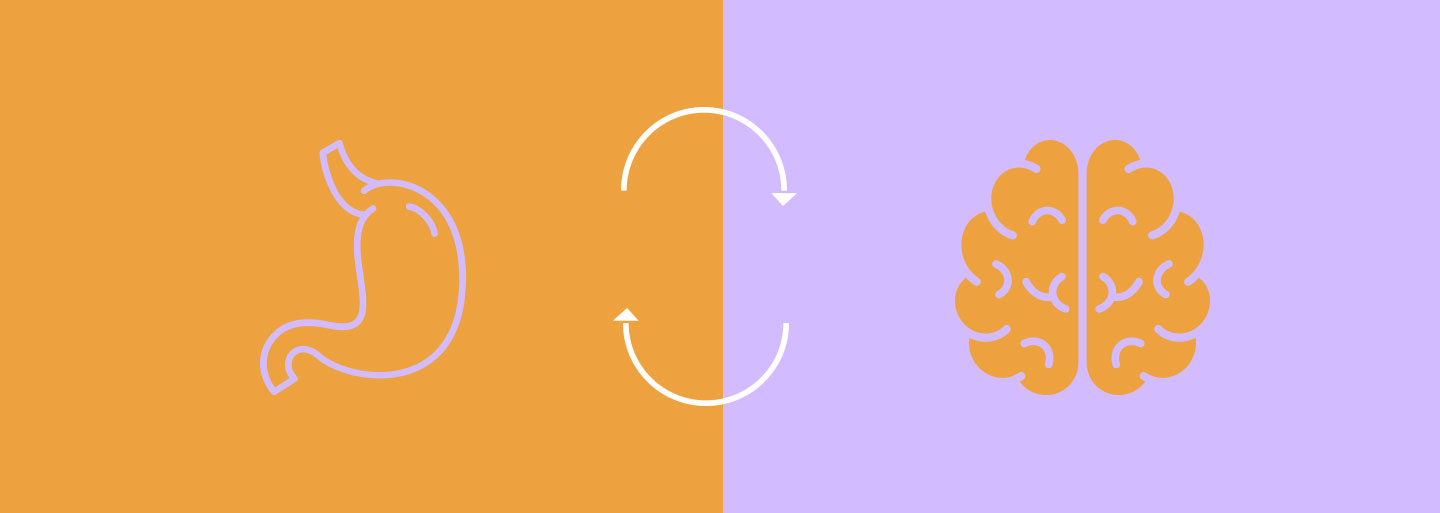How it works
The main communicators in your brain are neurons and neurotransmitters. There are 500 million neurons in your gut that are connected to your brain and channel through the nerves in your nervous system. For example, the vagus nerve is the biggest nerve that connects your gut and brain sending signals in both directions. The microbes in your gut can also produce several neurotransmitters. These are messengers in the nervous system that can control your emotions. For instance, your gut bacteria produce a neurotransmitter called gamma-aminobutyric acid (GABA) which can help control feelings of fear and anxiety.
Other microbes that connect your gut and brain, The Good Guys.
Your gut is also a key producer of some essential nutrients like short-chain fatty acids (SCFAs). Some SCFAs like butyrate, propionate and acetate help your brain function. We like to call these SCFAs, 'The Good Guys' because they are the key to providing energy that promotes healthy functions of your gut lining cells and reduces inflammation in your gut. They are produced by bacterial fermentation from dietary fibers that are not digestible by the small intestine. So the best way to get your daily dose of The Good Guys is to try out some foods rich in dietary fibers. See our list of food suggestions in our Kean Gut+ report.
Why is the gut-brain axis important?
This connection is important when it comes to your diet because it demonstrates the true nature of the expression, "You are what you eat." What we eat to feed ourselves and our gut microbes can impact not only our physical health, but our emotional health as well. By being mindful of the foods we eat by incorporating foods like dietary fibers or resistant starches we can improve the diversity of our gut microbes that will keep us happy and healthy.
What can you do to improve your gut microbiome?
1. Eat a colorful array of foods. Choosing foods like beans or fruit that contain plenty of fiber to promote healthy gut bacteria like Bifidobacteria.
2. Try fermented foods. Foods like yogurt, sauerkraut, or kimchi can promote Lactobacilli, another beneficial bacteria that helps defend against diseases in your gut.
3. Take a probiotic supplement. Probiotics are a great way to prevent your gut from dysbiosis-- an imbalance of bacteria in your gut.
4. Do a gut test. The best place to start your gut health journey is to find out what your gut needs. A gut test can tell you what good bacteria you already have, and what you need more of to obtain a healthy gut.
Kean Gut & Gut+ can give you the results you're looking for, with actionable takeaways to bring measurable change to your physical and emotional health.
Be the first to hear about all things Kean Health, get exclusive access and get 35% off your first order!
REFERENCES
- “The Brain-Gut Connection.” Johns Hopkins Medicine, https://www.hopkinsmedicine.org/health/wellness-and-prevention/the-brain-gut-connection.
- Robertson, Ruairi. “The Gut-Brain Connection: How It Works and the Role of Nutrition.” Healthline, Healthline Media, 20 Aug. 2020, https://www.healthline.com/nutrition/gut-brain-connection.




